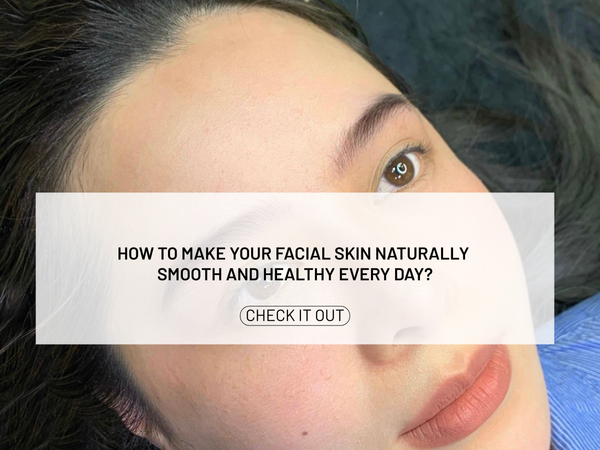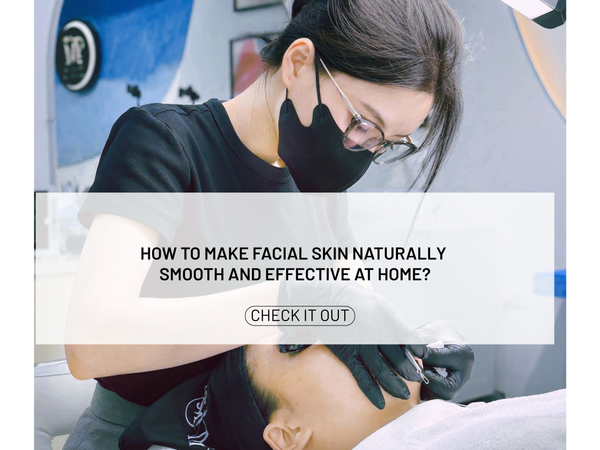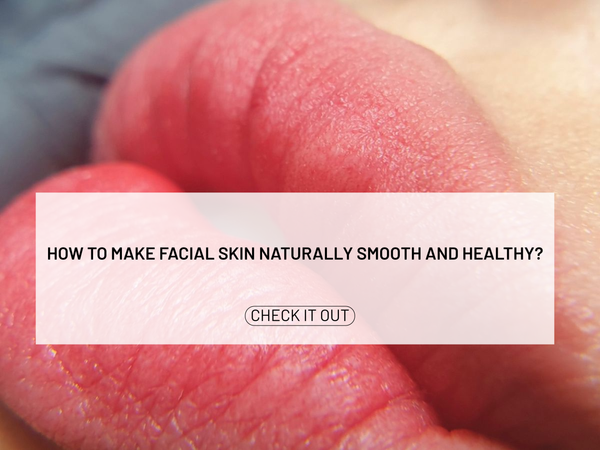Effective solutions for facial skin with pigmentation: Causes and treatment methods
Facial pigmentation is a common issue that many people face, especially women. Pigmentation not only affects appearance but also makes many feel less confident. This article will explore the causes of pigmentation, how to recognize it, treatment methods, and effective preventive measures to help you achieve healthy and radiant skin.
Highlights
- Facial pigmentation can be caused by genetics, melanin disorders, or hormonal changes.
- Signs of pigmentation include brown spots on the skin, often appearing in areas exposed to sunlight.
- Treatment for pigmentation can include medication, pigmentation creams, peels, or laser treatments.
- Prevent pigmentation by using sunscreen and maintaining a healthy diet.
- Post-treatment skin care is crucial to maintain results.
Causes of Facial Pigmentation
Genetics and Family Factors
We cannot deny that genetics plays an important role in the formation of facial pigmentation. If someone in the family has pigmentation, it is highly likely that we will also encounter this condition. This indicates that the gene factor can affect our skin pigmentation.
Melanin Disorders
Melanin disorders are one of the main causes of facial pigmentation. When melanin is produced excessively, it creates brown patches on the skin. This often occurs due to:
- Hormonal changes.
- Sun exposure.
- Using inappropriate cosmetics.
Hormonal Changes
Hormonal changes, especially during pregnancy or when using birth control pills, can lead to facial pigmentation. We need to pay attention to these changes to take timely preventive measures.
Complications from Other Conditions
In addition to the above causes, facial pigmentation can also arise from other conditions such as:
- Liver diseases.
- Endocrine disorders.
- Other dermatological conditions.
We need to monitor our health status to detect early and treat promptly.
How to Recognize Facial Pigmentation

Signs of Facial Pigmentation
We can recognize facial pigmentation through some clear signs. Brown or yellow spots often appear on areas such as the forehead, cheeks, chin, and nose. To determine accurately, we need to pay attention to:
- Color: Pigmentation can range from light yellow to dark brown.
- Size: The size of pigmentation spots can vary, from small to large.
- Location: Pigmentation often appears in areas of skin that are more exposed to sunlight.
Distinguishing Pigmentation from Other Skin Issues
Sometimes, pigmentation can be confused with other skin issues. To differentiate, we need to:
- Check the color: Pigmentation is usually brown or yellow, while other conditions may be red or white.
- Consider the location: Pigmentation often appears in areas of skin that are more exposed to sunlight.
- Consult a doctor: If unsure, visit a dermatologist for advice.
The Impact of Sunlight
Sunlight is one of the main causes of facial pigmentation. We need to:
- Use sunscreen daily to protect the skin from UV damage.
- Avoid going out during peak sunlight hours to minimize the risk of pigmentation.
- Wear sun-protective clothing when outdoors to protect the skin.
The Effects of Low-Quality Cosmetics
Using cosmetics of unclear origin can worsen pigmentation. To avoid this, we should:
- Choose quality products from reputable brands.
- Perform a patch test on a small area of skin to check for reactions.
- Stop using immediately if signs of irritation such as redness, itching, or swelling occur.
Let’s take care of and protect our skin by recognizing early signs of pigmentation and implementing effective preventive measures!
Treatment Methods for Facial Pigmentation

Medication Treatment
We can use various medications to treat facial pigmentation. Some common medications include:
- Tranexamic acid: Helps lighten pigmentation and dark spots.
- Azelaic acid: Safe for pregnant women, can be used long-term.
- Hydroquinone: Brightens the skin but needs to be used carefully.
Using Pigmentation Creams
Pigmentation creams are one of the effective methods. We should choose creams containing ingredients such as:
- Vitamin C: Helps brighten the skin and reduce pigmentation.
- Retinoids: Enhance skin regeneration but should be used with caution.
- AHA/BHA: Helps exfoliate and brighten the skin.
Peeling Methods
Peeling is a method that helps remove dark skin layers. We can perform:
- Chemical peels: Use acids to remove dead skin cells.
- Laser peeling: Effectively lightens pigmentation.
- Natural product peeling: Use natural masks to brighten the skin.
Laser Treatment
Laser technology is one of the most modern methods for treating facial pigmentation. We can:
- Use Q-Switch laser: Helps destroy pigmentation without damaging the skin.
- Fractional laser: Rejuvenates the skin and effectively lightens pigmentation.
- IPL laser: Helps brighten the skin and reduce pigmentation.
We need to be patient and choose the appropriate method to achieve the best results for our skin. Remember that daily skin care is also very important to maintain treatment effectiveness.
Preventive Measures for Facial Pigmentation
Using Sunscreen
We need to use sunscreen daily to protect the skin from the effects of sunlight. Sunscreen helps prevent the formation of facial pigmentation and protects the skin from UV rays.
Healthy Diet
A healthy diet is very important. We should include plenty of vegetables, fruits, and drink enough water. Limit spicy foods and alcohol to reduce the risk of pigmentation.
Limit Use of Cosmetics
Using low-quality cosmetics can increase the risk of pigmentation. We should choose quality products and limit makeup when not necessary.
Avoid Stress and Anxiety
Stress can affect hormones and increase the risk of pigmentation. We should find ways to relax, such as exercising or meditating, to keep our spirits calm.
Post-Treatment Skin Care for Pigmentation

Moisturizing and Protecting the Skin
After treating pigmentation, moisturizing and protecting the skin is very important. We need to:
- Use a moisturizer daily to keep the skin soft.
- Apply sunscreen with a minimum SPF of 30 to protect the skin from sunlight damage.
- Avoid prolonged exposure to sunlight.
Using Skin Recovery Products
We should choose suitable skin recovery products to help the skin recover quickly:
- Use serums containing vitamin C to brighten the skin.
- Choose creams with natural ingredients that do not cause irritation.
- Apply recovery masks made from natural ingredients like aloe vera or honey.
Avoid Environmental Impacts
To protect the skin after treatment, we need to:
- Avoid steaming or hot baths immediately after treatment.
- Do not use cosmetics containing strong chemicals.
- Limit exposure to dust and pollution.
Be Consistent with the Care Routine
Finally, being consistent with the daily skin care routine is essential. We should:
- Monitor the skin condition regularly to detect early issues.
- Consult experts if there are any unusual signs.
- Ensure a healthy diet to support skin health from within.
Post-treatment skin care not only helps the skin recover but also brings a healthier and more radiant complexion.
Natural Home Remedies for Pigmentation

Using Natural Masks
We can easily make masks from natural ingredients to treat pigmentation at home. Some effective masks include:
- Perilla leaf mask: Helps brighten the skin and reduce pigmentation. We just need to blend perilla leaves, mix with honey and lemon juice, then apply to the face for about 15-20 minutes.
- Aloe vera mask: Aloe vera has soothing properties and provides moisture to the skin. We can take fresh aloe vera gel, apply it to the face, and leave it for about 20 minutes before rinsing off.
- Bitter melon mask: Bitter melon helps brighten the skin and reduce pigmentation. We just need to slice bitter melon thinly and apply it to the pigmented area for about 15-20 minutes.
Detox Steam
Steaming is a simple yet effective method to cleanse the skin and help unclog pores. We can:
- Boil water and add a little mint or ginger.
- Lean over the pot, using a towel to cover the head to trap the steam.
- Relax for about 10-15 minutes to allow the pores to open and detoxify.
Detox Water
Drinking detox water not only helps cleanse the body but also improves skin condition. Some simple recipes include:
- Lemon water and warm water: Helps brighten the skin and stimulate digestion.
- Pineapple water: Provides anti-inflammatory and antioxidant properties.
- Carrot juice: Rich in beta-carotene, helps brighten the skin.
Facial Massage
Facial massage not only helps relax but also stimulates blood circulation. We can:
- Use natural oils like coconut or almond oil for massage.
- Perform gentle movements to soften and nourish the skin.
- Massage for about 5-10 minutes daily to feel the difference.
Be persistent in applying these methods for healthy and radiant skin!
Notes When Treating Facial Pigmentation
Consult Experts
When treating facial pigmentation, we should consult experts to find the most suitable method. This helps us:
- Get advice on effective products and treatment regimens.
- Identify products that may cause skin irritation.
- Ensure safety and effectiveness during treatment.
Check for Skin Reactions
Before using any product, we need to:
- Perform a patch test on a small area of skin to check for reactions.
- Stop using immediately if signs of irritation such as redness, itching, or swelling occur.
Do Not Self-Medicate
We should not self-medicate with products without a doctor's guidance. This can lead to:
- Worsening skin condition.
- Recurrence or worsening of pigmentation.
- Causing damage to the skin.
Regularly Monitor Skin Condition
Finally, monitoring skin condition is very important. We should:
- Record changes in the skin to report to the doctor.
- Adjust the treatment regimen if necessary.
- Be patient and not rush in the treatment process.
When treating facial pigmentation, you need to pay attention to some important factors to achieve the best results. Be sure to research treatment methods and choose products suitable for your skin type. Don't forget to visit our website for more information and free consultation!
Conclusion
To have healthy skin and avoid pigmentation, daily skin care is very important. We need to understand the causes of pigmentation and apply appropriate treatment measures. Remember that using sunscreen, maintaining skin moisture, and eating healthily will help protect the skin from adverse environmental effects. If pigmentation does not improve, seek experts for timely advice and treatment. Skin care is not just a habit, but a long journey to preserve natural beauty.
Frequently Asked Questions
What is facial pigmentation?
Facial pigmentation is the condition of brown or yellow spots appearing on the skin, often found in areas exposed to sunlight.
What causes facial pigmentation?
Pigmentation can be due to genetics, hormonal disorders, or the effects of sunlight and low-quality cosmetics.
How to recognize facial pigmentation?
Pigmentation often has uneven colors, appearing more when exposed to sunlight.
Are there home remedies for treating facial pigmentation?
Natural masks like aloe vera, perilla, or rice water can be used to support pigmentation treatment.
What are effective ways to prevent facial pigmentation?
Using sunscreen daily and maintaining a healthy diet to protect the skin.
What should be done after treating facial pigmentation?
Carefully care for the skin, moisturize, and protect it from environmental impacts.



